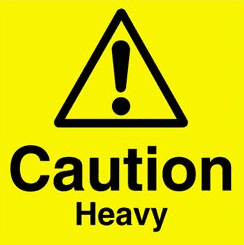[caption id="attachment_388" align="alignright" width="275"]
 Courtesy of Oxford Pa Fire Department
Courtesy of Oxford Pa Fire Departmentbefore making an interior push? Transitional attack or flowing water through an opening in the exterior of a building, which is on fire, has been an often-debated tactic that had no scientific data to prove or disprove this type of suppression technique, until now. At this year’s Fire Department Instructors Conference in Indianapolis Indiana NIST, with a partnership with the FDNY, presented their findings from a recent study on fire dynamics and tactics used. The experiments conducted on Randal’s Island looked at different variables such as flow paths, water application, and thermal balances from each. While watching this ground breaking study one thing kept coming to mind, Hoarder Fires. Stacks of belongings that have taken over a structure can add a level of danger to any firefighter who makes entry. It can also affect the variables covered by the NIST study. Let’s look at a few of the variables exposed by the release of this ground breaking presentation and how they relate to the Hoarded Environment.
Flow Paths
One of the variables released in the study was the flow of super-heated smoke, unburned fuel. If a firefighter does not ventilate a structure and proceeds through a door, they are crawling right into the “flow path” of heat and smoke. Hearing this information given merit with scientific evidence shouldn’t come as a surprise to any firefighter who has crawled a dark hallway. Now that we have the data to back up our suspicions let’s take a look at the hoarded environment.
If a house has Heavy Content environment inside it has the potential for having multiple flow paths. Depending on the level of belongings, the airflow can be forced through the narrow pathways formed by the stacks of stuff. What does this mean to an interior firefighter? Unlike entering a “normal” structure fire, a firefighter may not get relief for the heat like a firefighter who has progressed through a door and moved out of the flow path. Channeling the heat through pathways can bring the heat directly down on an advancing firefighter. Add a variable, such as stacked belongings that raise a firefighter up to two feet higher, our PPE may be pushed to its limits.
Heat Level Reduction
Another variable revealed in the NIST study was the change in heat levels after the application of water streams. To summarize the findings they applied water to the first floor fire and measured the second floor temperatures. The also revealed the difference between an open door and a closed door. These different variables can be applied to the hoarder fire environment.
First was the evidence of heat reduction with the application of water. It has been believed if we apply water through a window that we reduce the survival chances of a potential victim. This study proved that if water is applied on a first floor fire the second floor temperatures went down. If we were truly thinking about how this works it makes since, fire knockdown the heat should be knocked down. Let us apply these findings to the hoarded environment. If you apply water to a first floor fire, will there be enough airflow available to cool the upstairs?
Can you isolate a bedroom in hoarded conditions? Hoarder conditions can prevent an occupant or firefighter from closing interior doors. As the clutter piles up to ceiling level and spills out into the hallways you may not be able to apply either of these two methods. How does this affect an interior firefighter? If you make entry into a fire and expect the ability to isolate yourself from the fire by closing an interior door you can be exposing yourself to higher heat levels. Once a determination has been made that Heavy Contents are present all firefighters must estimate that interior doors will NOT close, due to the level of clutter.
Conclusion
All firefighters should take the time to review the latest release from NIST. There works have been groundbreaking and this one is no different. Take an hour out of your hectic schedule to watch and learn. While you review this material, keep in mind that these rules may or may not apply to the hoarded environment. Cluttered homes can add variables that will affect each one of their findings. Blocked flow paths and doors that cannot be closed with complicate the use of these new findings. While they can NOT be scientifically proven at this time we should all adjust for them if a hoarding condition has been discovered.
Watch the presentation from NIST, FDIC, and FDNY here.





























